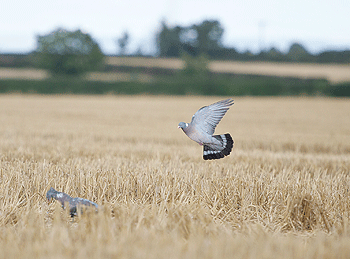Our Work & What We Do
Agricultural Wildlife Management: Controlling Pests and Protecting Crops
Agricultural wildlife management is key to managing the pests that threaten crops and livestock. Animals like foxes, rabbits, deer, pigeons, and Canadian geese can cause significant damage to farmland. Effective pest control is essential to protecting the farm’s productivity and maintaining a healthy ecosystem.
Strategies such as using protective barriers, trapping, and attracting natural predators help reduce the impact of these pests. Farmers can also incorporate wildlife management techniques to control bird populations, which can damage crops by feeding on them. By managing these pests responsibly, agricultural practices can continue without harming the environment.
This approach ensures a balance between protecting farmland and conserving wildlife, creating a resilient and sustainable agricultural system.
Our business has had the privilege of collaborating with a range of respected organizations in both the public and private sectors to promote effective pest control and sustainable agricultural wildlife management. We’ve worked with water management groups to protect resources and reduce the impact of pests like geese and rabbits on agricultural landscapes. Our partnerships with military estates have allowed us to implement pest control strategies that balance conservation efforts with the need to manage wildlife populations that threaten crops and farmland.
In wildlife conservation, we’ve worked with groups that focus on responsible pest management, ensuring that larger pests such as deer, foxes, and birds are managed in a way that supports sustainable farming practices. These collaborations have helped us share knowledge on controlling pest populations without harming the broader ecosystem, while also supporting sustainable land management.
Our ongoing work with conservation groups has been vital in restoring habitats and controlling the spread of destructive species that interfere with farming operations. We’ve also teamed up with local authorities to promote pest control measures that benefit both wildlife and the environment, ensuring that agricultural practices remain resilient and pest-resistant.
These partnerships reflect our commitment to integrating pest control into agricultural management, striking a balance between protecting farmland and preserving wildlife habitats.



